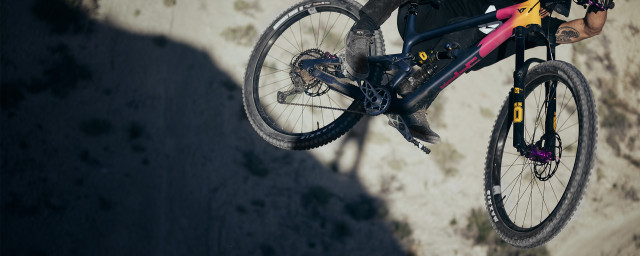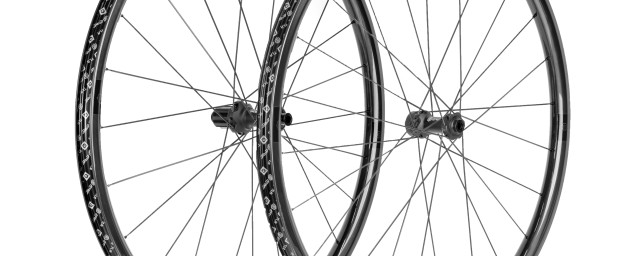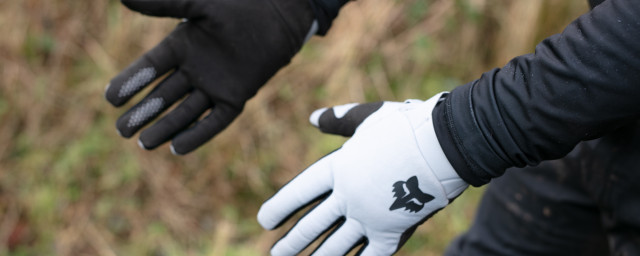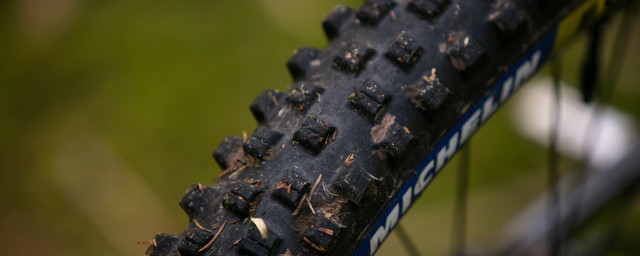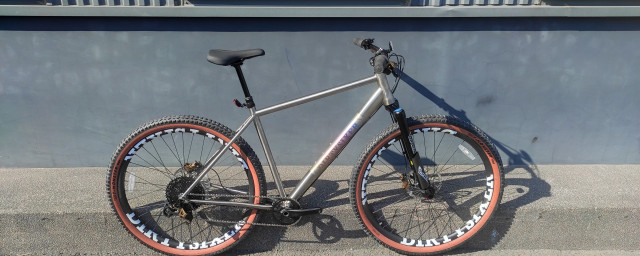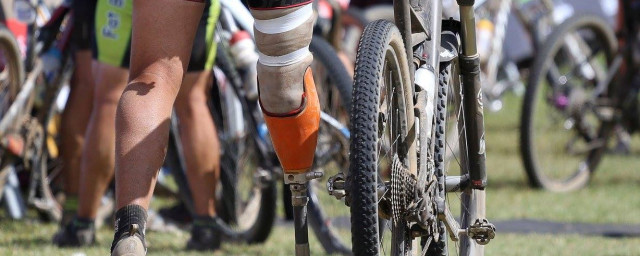Everything you always wanted to know about sealant (but were afraid to ask)
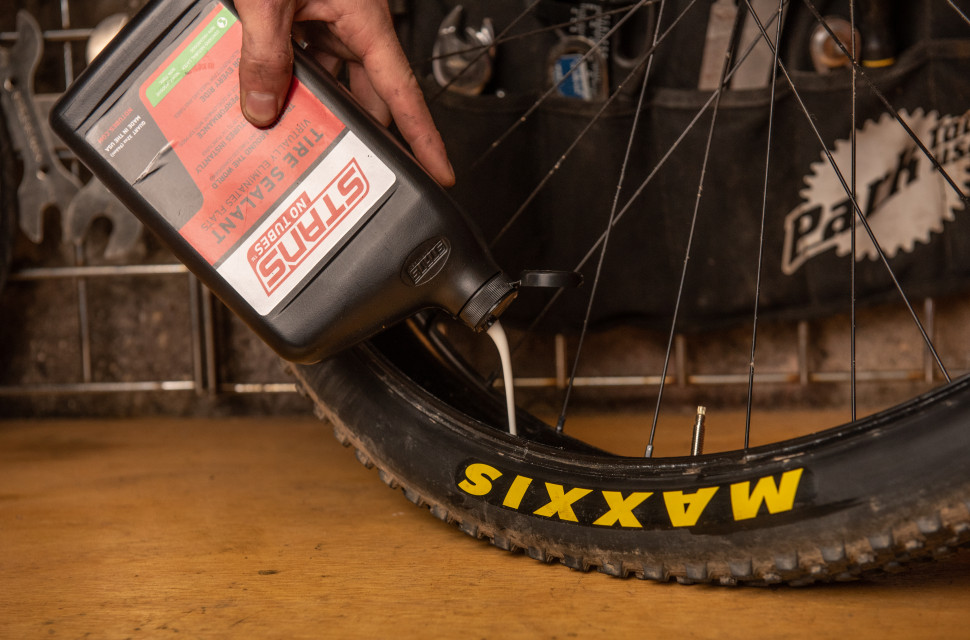
[Sponsored content]
Cycling technology seems to develop at a rapid pace. But if there’s been one revolution more important than any other over the last decade, it’s in the realm of tubeless tyres.
- off.road.cc adventures: Elan Valley bikepacking bothy trip
- 11 tools every home bike mechanic should own
- The best gravel and adventure bikes you can buy for under £1,500
Tubeless tyres allow you to run lower pressures without the worry of pinch-flats, meaning better traction in different conditions. Lower-pressure tyres are also comfier and more likely to roll over sharp objects without causing damage. Most crucially, should something actually succeed in penetrating the tubeless tyre’s carcass, gone are the days of peering at a deflated inner tube trying to locate a microscopic hole to repair. Tubeless technology brushes off typical punctures almost dismissively, with sealant permanently on standby inside the tyre to plug up holes instantly.
But just because we all know the benefits of tubeless tyre technology, it doesn’t mean we all know exactly how it works. Luckily, the tubeless tyre gurus at Stan’s do. So we’ve teamed up with them to look at how you can get started with tubeless tyres.
Tubeless tyres are only good for mountain biking, right?
Wrong. With the right tubeless rims, rim tape, sealant, valves and tyres, road and gravel bikes can run tubeless, just like mountain bikes. You’ll get all the same benefits of speed and traction from the ability to use lower pressures – most road tubeless users run 50-60psi for tyres in the 20-30mm range – and puncture protection too. We know roadies are typically hesitant about using what they might see as ‘mountain bike technology’, but plenty of elite road riders use tubeless – because it actually makes tyres lighter – and more and more road and commuting bikes are being sold with tubeless ready wheelsets already fitted.
Can I just buy tubeless tyres, squirt in some sealant and be good to go?
First, you need to check your wheels have tubeless ready rims. These might already have tubeless tape installed on the rim bed – if not, you’ll need to fit it – but the overall shape of the rim has to be able to hold the bead of a tubeless tytre safely and securely.
I’ve got normal rim tape, can’t I just use that?
Conventional rim tape is used to prevent the spoke ends damaging the inner tube, but with tubeless tyres, the rim tape forms an airtight barrier over the spoke holes and with your tyre. Stan’s makes several widths of tubeless rim tape to suit a variety of rims, starting at 21mm and going up to 39mm. As a rule of thumb, we suggest selecting a rim tape that’s 1-2mm wider than the internal rim width – the key thing is that the tape should run sidewall to sidewall. The seal created by the rim tape also protects the rim, spokes, and spoke nipples from exposure to moisture brought on by the sealant you’ll inject into the tyre.
And don’t think about using a creative alternative, like Gorilla Tape or electrical tape. Gorilla Tape is porous, so that air-tight seal isn’t going to happen. And electrical tape isn’t sticky enough to stay in place securely.
How do I inject sealant into the tyre? In fact, with no inner tube, how do even I get air in the tyre?
You use a valve – just like a presta valve found on an inner tube – although, in a tubeless tyre’s case, you have to install the valve directly onto the rim. Tubeless valves – such as those made by Stan’s – have a wide rubber base that creates an airtight seal with the rim. The core of a tubeless valve is also removable so that liquid sealant can be injected into the tyre without removing it from the rim. Just make sure you pick out a valve that’s suitable for the depth of your rim. Stan’s suggests for rim depth of less than 20mm = 35mm valve; 15-28mm = 44mm valve; 28-40mm = 55mm valve; 40-62mm = 80mm valve; and 60-82mm = 100mm valve.
You’ve mentioned sealant a couple of times now - what do I do with that?
Tubeless tyres are manufactured to a higher standard than normal tyres – which means they are able to form a tight-fitting seal with the rim that prevents air from escaping. Sealant isn't technically required to be used during initial setup and it does very little to fill any gaps between the tyre's bead and the rim's bead. However, sealant does take care of any imperfections in the tyre's casing. This allows for a more airtight system as a whole and allows us to run lighter tyres that are not required to be overbuilt.
I’ve heard that’s not all sealant does, is it?
No, absolutely not. When you’re out riding, if something gets through the carcass of your tyre to cause a puncture, the sealant swilling around inside the tyre pretty much instantly seals up any holes that are made and you can keep on riding (dependent on hole size – sealant isn’t completely magic, after all). And if the hole is too big for the sealant to sort out, Stan’s has an awesome and unique innovative DART Tool to fix more significant punctures.
Is there only type of sealant then?
Actually, Stan’s has two types of sealant: standard sealant and Race Sealant. For most riders requiring general performance, standard sealant is the best choice as it can seal punctures up to ¼in or 6.5mm wide almost instantly and will stay liquid within the tyre for 2 to 7 months, depending on the local climate. By using one of Stan’s 2oz bottles or its injector, Stan’s standard sealant can be installed directly through the valve, once the core has been removed.
One important thing to remember about all of Stan’s sealant, though, is you really need to give it a good shake for at least two minutes before use. So, between fitting tubeless tyres and actually going for a ride, you’ll get a pretty decent all-body workout.
What’s special about Race Sealant?
Race Sealant has been developed for riders who need to avoid punctures at all costs. Compared to Stan’s standard sealant formula, Race Sealant uses twice the amount of sealant ‘crystals’ and introduces additional XL-sized crystals to plug even bigger punctures. Because of the high concentration and oversized nature of sealant crystals, Race Sealant is not compatible with the Stan’s injector and must be poured into the tyre directly by unseating a portion of the tyre’s bead. It’s also important to inspect Race Sealant levels every couple of weeks as it will only last 2-3 weeks before drying up.
How often do I need to check or replenish Stan's standard sealant?
It’s important to refresh your tyre’s sealant levels periodically, although the length of time between refills will vary with environmental factors like temperatures and humidity. As we mentioned, standard sealant should remain in liquid form inside the tyre for 2 to 7 months. Stan’s is currently in the midst of a ‘top-up your sealant’ campaign so, if you’ve left your bike in the garage over winter, it’s almost certainly worth putting some new sealant in. Don’t worry about cleaning out the old stuff, though – the new top-up sealant will work just fine as it is.
How much sealant do I need to get in my tyre?
Sealant amounts are relative to tyre volume. For instance, a 29 x 2.5in mountain bike tyre will need more sealant than a 700 x 35c gravel tyre. To help guide riders, Stan’s has put together a handy chart...
OK, so I’ve got a tubeless read wheelset, tubeless rim tape, tubeless valves, tubeless tyres and tubeless sealant – do I need anything else?
Yes indeedy, you’ll need three essential tools:
- Valve Core Remover - this helps pull out the valve’s core when you need to install sealant through the valve. Also, with the core removed, you’ll be able to pump a higher volume of air into the tyre quicker, making it easier to seat the tyre’s bead.
- Sealant Injector – the Stan’s sealant injector measures exact volumes of sealant and then threads it directly onto the valve for a no-mess application.
- High-Volume Floor Pump – for easy at-home installation, Stan’s suggests using a floor pump optimised for high-volume tyres to easily seat your tyre’s bead onto the rim.
To read Stan’s full Tubeless Tyre Set-up Guide, visit https://www.notubes.com/support-center/tubeless-guide.
And if you want to watch tubeless tyres and Stan's sealant put to the ultimate test on the 'Roller of Death', watch this...




